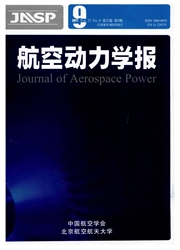

 中文摘要:
中文摘要:
开展了基于尾气静电信号的航空发动机气路监控技术的应用研究,把尾气静电监测信号EGEMS作为一种新的气路状态参数并建立其基线模型,通过监控尾气静电信号RMS(root mean square)值的偏差值实现对气路部件的实时监控.首先从尾气静电监测的角度总结了尾气碳烟颗粒物的排放特性,分析了尾气静电信号的基线成分、主要影响因素及典型故障静电信号特征,在此基础上分别提出了基于燃油流量单参数的尾气静电信号基线模型(参数化模型)和基于多元状态估计技术的多参数基线模型(非参数化模型)挖掘技术.通过对某型涡轴发动机尾气静电信号的分析表明:所建立的基线模型能够准确反映发动机不同工况下的尾气静电信号的基本特征,有效地监测到气路的异常状态,验证了所提方法的可行性和有效性.
 英文摘要:
英文摘要:
A study on the application of the aero-engine exhaust gas electrostatic monitoring technology for gas path component condition monitoring was conducted.The exhaust gas electrostatic monitoring signal(EGEMS) was taken as a new gas path parameter and its deviation from the baseline in EGEMS root mean square(RMS) value was monitored for real-time gas path component anomaly detection.Firstly,the exhaust gas soot emission characteristics were studied from the electrostatic monitoring point of view,and then the baseline composition of the EGEMS,the main influencing factors as well as the EGEMS features of the typical faults were studied.Furthermore,two baseline model mining methods were proposed respectively for a single parameter(fuel flow rate) based baseline model(parametric model) and a multi-parameter based baseline model(nonparametric model) which was obtained using multi-state estimation technique.The case study on a real EGEMS data set from a turbo-shaft engine shows that the established baseline model can characterize the EGEMS under various operating conditions of the test engine,and can effectively detect the anomaly of the gas path components.
 同期刊论文项目
同期刊论文项目
 同项目期刊论文
同项目期刊论文
 Application of a state space modeling technique to system prognostics based on a health index for co
Application of a state space modeling technique to system prognostics based on a health index for co Prognostics Uncertainty Reduction by Fusing On-line Monitoring Data Based on a State-Space-Based Deg
Prognostics Uncertainty Reduction by Fusing On-line Monitoring Data Based on a State-Space-Based Deg Experimental study on engine gas-path components fault monitoring using exhaust gas electrostatic si
Experimental study on engine gas-path components fault monitoring using exhaust gas electrostatic si 期刊信息
期刊信息
